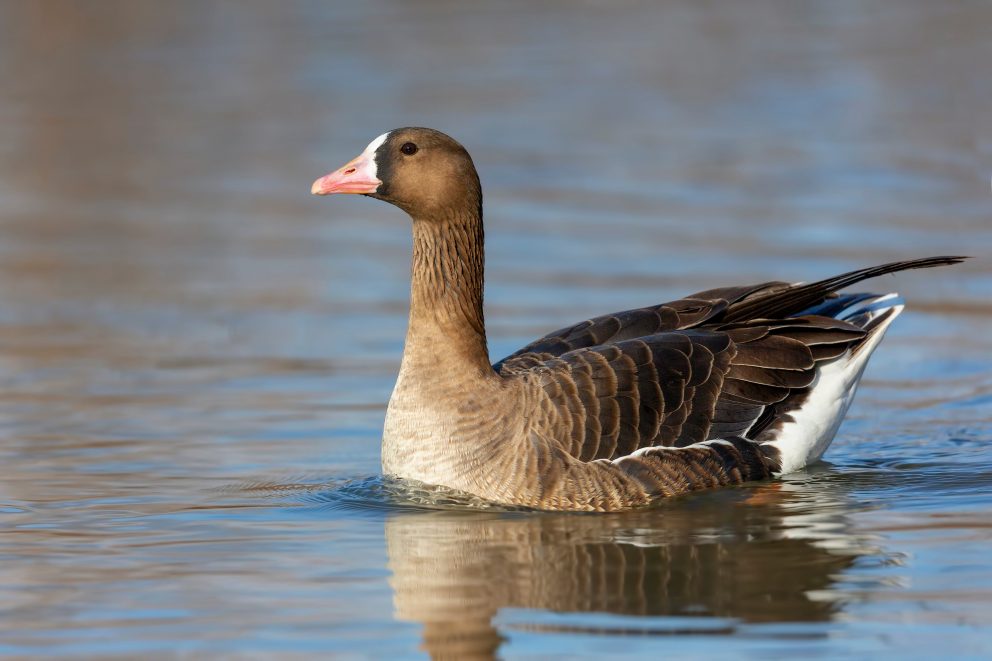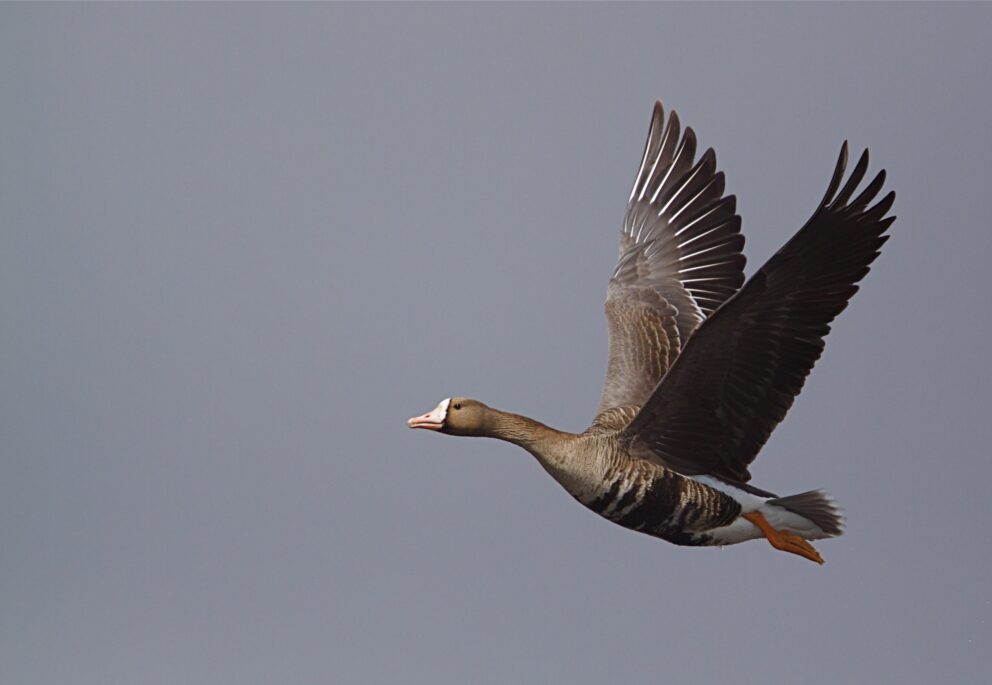- SCIENTIFIC NAME
- Anser albifrons
- CLASSIFICATION
- Bird
- LIFE SPAN
- 15-20 Years
- SIZE
- 25-39” | 4-7lbs
- STATE CONSERVATION STATUS
-
- State Protected
- FEDERAL CONSERVATION STATUS
- Least Concern
- GAME STATUS
- Game
- GAME TYPE
- Waterfowl
- Washoe
- Humboldt
- Pershing
- Churchill
- Mineral
- Lyon
- Douglas
- Carson City
- Storey
- Elko
- Lander
- Eureka
- White Pine
- Esmeralda
- Nye
- Lincoln
- Clark
- Developed Landscapes
- Lakes and reservoirs
Natural History
Greater White-fronted Geese primarily eat plant matter such as seeds, grains, grasses, and berries, but also consume aquatic insects and mollusks. Before migration, female Greater White-fronted Geese will gain 30 percent more body weight in preparation for the journey and egg production. They will lay four to seven eggs, which hatch after 26-28 days. Greater White-fronted Geese form pair bonds and the young maintain association with their parents for years.
Fun Facts
The dark splotches along their chest give Greater White-fronted Geese the nickname "specklebelly."














